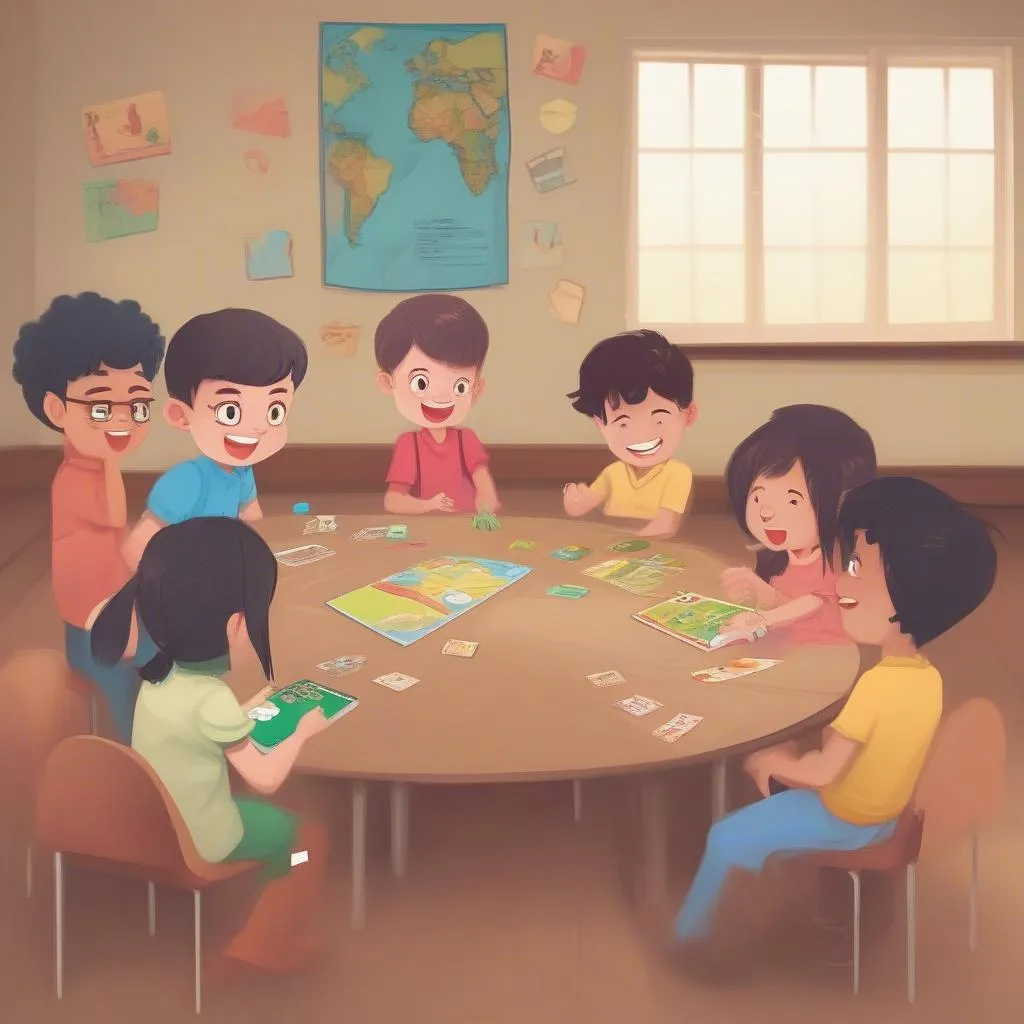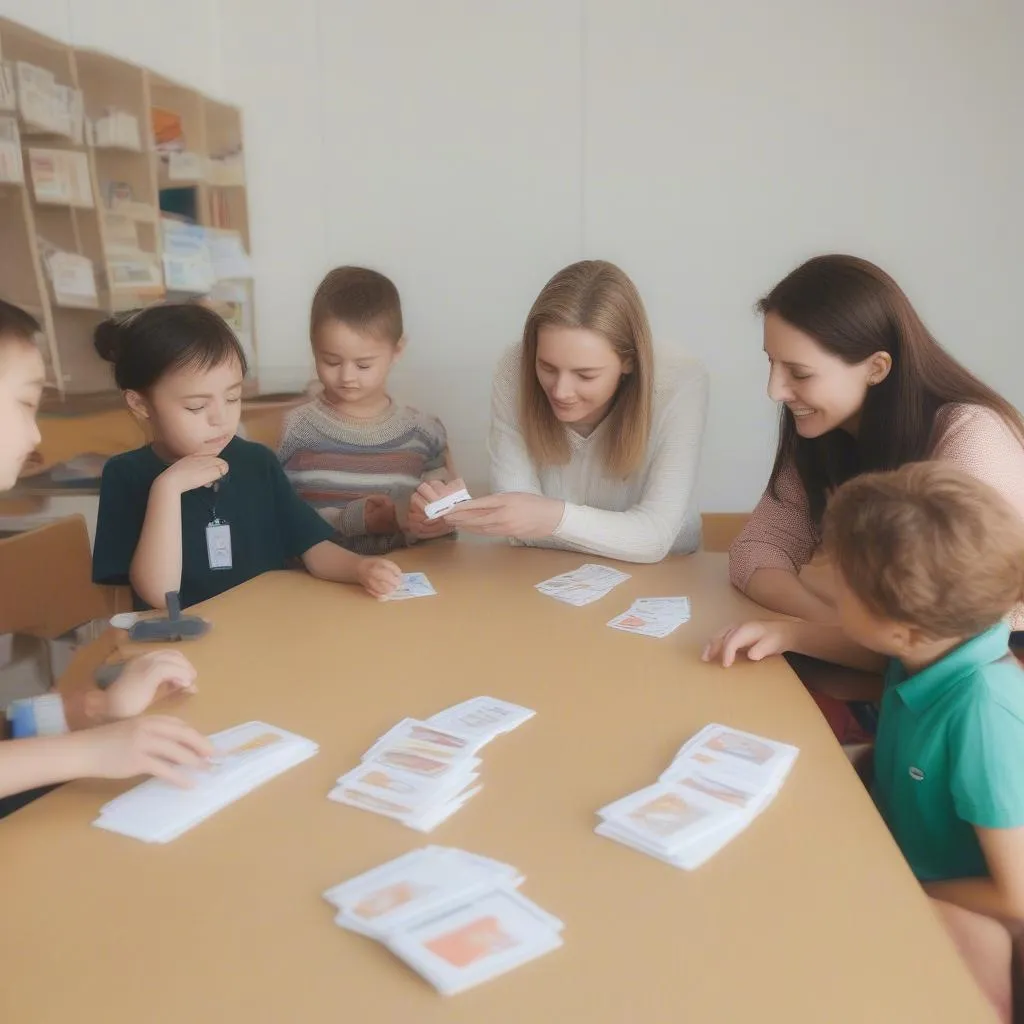As the world becomes increasingly interconnected, English, the most universal language, opens doors to a broader world. It’s natural for parents to want to introduce English to their preschoolers. But how can you make English learning effective, enjoyable, and age-appropriate for young children? Let’s explore effective methods for teaching English to preschoolers with TUỔI THƠ!
The Importance of Teaching English to Preschoolers
“Teaching children is like carving letters on stone,” goes a Vietnamese proverb, highlighting the lasting impact of early childhood education. Introducing English at a young age offers numerous benefits for preschoolers:
- Develops Language Thinking: Early exposure to English enhances children’s language thinking skills, improving their ability to absorb and process information effectively.
- Enhances Communication Skills: Children gain the confidence to communicate with foreigners, expanding their international network and increasing future opportunities for studying and working in global environments.
- Boosts Brain Development: Learning English stimulates brain activity, enhancing memory, concentration, logic, and creativity.
- Opens Future Opportunities: English is a key that unlocks a world of opportunities, helping children confidently integrate into the global community and seize attractive career prospects.
Effective Methods for Teaching English to Preschoolers
1. Utilizing Early Education Methods
“You reap what you sow,” as the saying goes. Teaching English to preschoolers should start with simple concepts that match their learning abilities. Embrace early education methods through:
- Play: Children learn most effectively through play. Utilize games, songs, and stories in English to make learning engaging.
- Visuals: Visual aids help children understand and remember English vocabulary easily. Use pictures, flashcards, and videos to illustrate lessons.
- Music: Music is a powerful tool for teaching English to young children. Use English children’s songs and lively tunes to help them learn English naturally.
- Repetition: Repeating vocabulary and grammar structures multiple times helps children remember them longer. Incorporate repetitive activities into your teaching process.
2. Creating a Fun and Engaging English Learning Environment
“Practice makes perfect,” and creating a fun and engaging learning environment is crucial for sparking children’s interest in learning English. Try these approaches:
- Using Toys: Utilize English educational toys and games such as puzzles, drawing, and coloring activities to help children absorb knowledge naturally and effectively.
- Creating a Lively Learning Space: Decorate the learning space with colorful images, decorations, and cheerful music to create a relaxed and enjoyable learning atmosphere for children.
- Praising and Encouraging: Praising and encouraging children when they learn well boosts their confidence and love for learning English.
3. Utilizing Supporting Tools
“Supporting tools are companions,” and using tools like textbooks, software, and websites can make teaching English to preschoolers easier and more effective.
- Textbooks: Choose textbooks that are age-appropriate, visually appealing, and rich in content.
- Software: Utilize online English learning software and mobile apps to help children access English proactively and flexibly.
- Websites: Find websites and YouTube channels with English content suitable for preschoolers.
The Story of Little Minh Anh
Minh Anh is a very active and playful 4-year-old girl. Initially, Minh Anh’s parents wanted her to learn English, but she was afraid and would run away whenever she saw foreigners. Then, Minh Anh’s parents researched and applied methods of teaching English to preschoolers through games and visuals.
Her parents regularly used English toys, sang fun English children’s songs with her, and read English stories with beautiful illustrations. The family atmosphere was always filled with English sounds, which made Minh Anh feel excited and learn English naturally. Now, Minh Anh confidently communicates in basic English and loves learning English.
Advice from Experts
“Children are like buds on a branch,” Mr. Nguyen Van A – a renowned preschool education expert – shares: “To teach English to preschoolers effectively, parents need to create a fun, positive learning environment and use methods suitable for their age. Be patient and loving, and believe that your child will learn English well.”
Frequently Asked Questions
1. When is the best time to start teaching English to preschoolers?
Preschool education expert Ms. Nguyen Thi B affirms: “Children from 2 years old and up can already start learning English.” At this age, they have the ability to memorize and imitate, making it a golden time for language acquisition.
2. How should I teach English to preschoolers?
Mr. Tran Van C, an English teacher with many years of experience, shares: “Teach English to children by using fun methods, learning through games, songs, and stories…”
3. Should preschoolers attend English centers?
Preschool education expert Ms. Nguyen Thi D recommends: “Enrolling children in English centers is advisable, but parents need to choose reputable centers with qualified teachers and age-appropriate programs.”
Conclusion
Teaching English to preschoolers is a challenging yet incredibly rewarding journey. With effective methods, patience, and parental love, children will surely acquire English naturally and effectively.
Let TUỔI THƠ accompany you on your journey of teaching English to your beloved child!
 Child learning English
Child learning English
 Teacher teaching English to preschoolers
Teacher teaching English to preschoolers